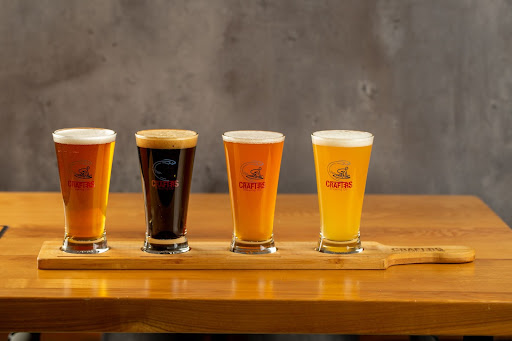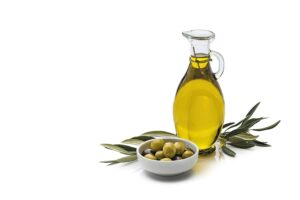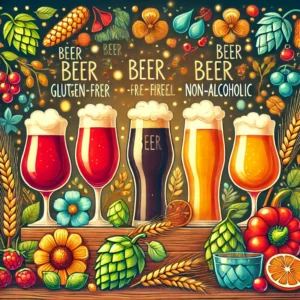Beer is probably the oldest and most common alcoholic beverage in the world. Its origins date back to around 3000 years ago, in ancient Egypt, and its production has been perfected in the Middle ages in monasteries. So, how is beer produced?
The basis of beer production is a natural chemical process called fermentation. The ingredients used that in their simplicity make it unique and unmistakable are barley, water, hops, and yeast. Processed together and fermented using different techniques, they create the famous:
- Ale
- Lager
- Stout and Porter
- Weiss and Blanche
The main ingredient is water, followed by barley – a cereal that once sprouted in water is called barley malt and from which the whole process starts. Another fundamental ingredient that gives the aroma and, most importantly, the unmistakable bitterness is the hops. Only the unfertilised female inflorescences are used, whose scent is considerably superior.
Finally, the fermentation process that leads the wort to become beer will only occur through the addition of yeast and the type of fermentation chosen. In high-fermentation beers, Saccaromyces Cerevisiae is used for an intense and full-bodied taste, while in low-fermentation beers where the taste will be lighter and more fragrant, Saccaromyces Carsbergensis is used.
In beer production, each stage requires its own equipment. Therefore, the production plant will consist of:
- A mill, for malt grinding
- A cooking room
- Fermentation tanks
- Maturation tanks or unitanks
- Bottling equipment
There are several specific types of machinery for bottling beer, including:
- Isobarometric bottlers: these are machines used to fill bottles so that a constant pressure is maintained inside the bottle during filling. They are used especially for craft beers.
- Capping machines: these are machines used to cap bottles with the correct caps. They can be automatic or semi-automatic.
- Labelling machines: these are machines used to apply labels to bottles and can be either roll-on, glue-on or pressure-on.
- Bagging machines: these are machines used for bottling beer in large kegs or bottles.
Let’s have a closer look at how to make craft beer!
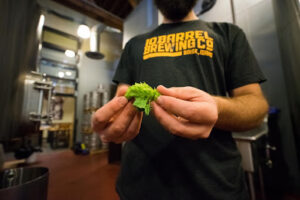
Craft beer production
What distinguishes craft from industrial beer production is the lack of filtration and pasteurisation at the end of the process. In fact, craft beers are neither filtered nor pasteurised, which makes them superior in terms of quality to industrial beers, as well as their characteristic taste and colour.
In fact, craft beer is generally produced in microbreweries or brewpubs. Moreover, the production facilities are similar to industrial facilities, but significantly more simplified. The main difference is quantitative: in fact, the capacity of a microbrewery never exceeds 5,000 hl per year.
If you are interested in how to open a brewery take a look at this article.
From the point of view of production and how to brew craft beer, the production technique is always the same, only the fermentation type and the flavouring ingredients added change, along with, of course, the experience of the master brewer.
Let’s have a look at the beer production process.
Craft beer production process
The main ingredient is undoubtedly water, but the second essential element in the beer production process is barley, a cereal that once sprouted is called barley malt and whose grains are dried in special ovens. These are then reduced to flour and mixed with hot water to create the mash or wort. The wort obtained in this way is boiled and then filtered. After filtering, hops are added, the properties of which are not only flavouring but above all bittering.
Once cooled, the wort is left to ferment by adding yeast. It is precisely the fermentation and the choice of specific yeasts that brings the different types of beers to life! After fermentation, the beer is poured into tanks and left to mature for a couple of weeks, thereby taking on its characteristic taste and smell. For industrial beers, the next step is filtration and pasteurisation to make them purer and clearer in order to last longer on the shelves. Craft beers, on the other hand, do not undergo pasteurisation, let alone filtration. In fact, many continue fermenting even once served in the glass!
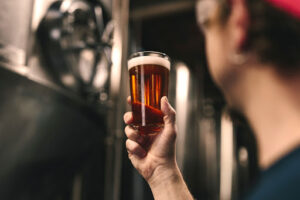
How beer is produced: the step-by-step guide
The beer production steps can be summarised in a single process for all breweries, namely:
- Barley malting: the barley is sprouted in water at room temperature; the resulting grains are dried in ovens so that they become crispy. This stage makes it possible to obtain malts of different roasting and quality.
- Grain milling: the grains are ground to obtain a rough flour.
- Mashing: rough flour is mixed with hot water, turning the malt into wort.
- Brewing: the wort is boiled and then filtered to remove the non-soluble malt solids. Hops are also added, over and over again. The mixture is then left to cool.
- Fermentation: the wort obtained is left to ferment in special containers, thanks to the addition of yeasts capable of transforming the sugars in the wort into alcohol and carbon dioxide. Following this first fermentation, which involves two techniques – high and low fermentation – a final one takes place: maturation in large tanks.
- Filtering and pasteurisation for the industrial cycle
Industrial beer production
The industrial beer production process certainly requires larger machinery than for craft beer and a production that focuses more on quantity rather than quality. However, the production process is the same as that used for all beers. The only differences are:
- The final filtration to make it appear clearer and purer
- Pasteurisation, at high temperatures, in order to eliminate some of the microorganisms present and make the beer last.

